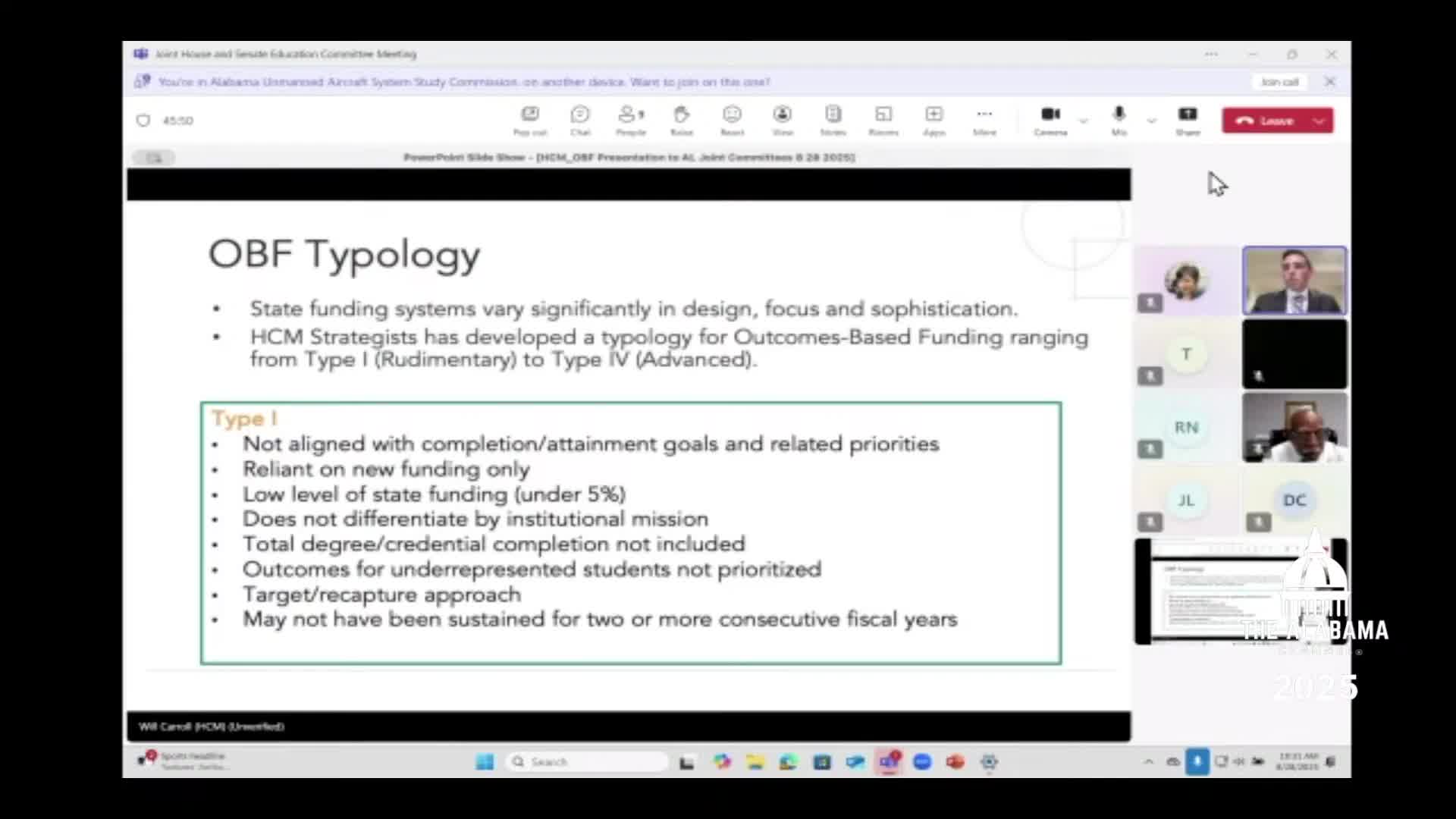States Implement Outcome Based Funding Models to Boost Degree Completion and Workforce Success
August 29, 2025 | Joint Interim Committees, Alabama Legislative Sessions, Alabama
Thanks to Scribe from Workplace AI , all articles about Alabama are free for you to enjoy throughout 2025!

This article was created by AI using a video recording of the meeting. It summarizes the key points discussed, but for full details and context, please refer to the video of the full meeting. Link to Full Meeting
The committee highlighted that the proposed funding model would not only focus on new financial resources but also on recurring funding tied to specific performance metrics. This includes degree and credential completion rates, which are crucial for ensuring that students achieve their educational goals. The model suggests a potential increase in funding allocations by up to 525%, emphasizing the importance of continuous improvement in educational outcomes rather than merely meeting set targets.
Key elements of the outcome-based funding model discussed include metrics for student retention, timely graduation, and job placement rates. These metrics are designed to foster collaboration between two-year and four-year institutions, ensuring that students have a clear pathway to success, whether they are transferring from community colleges to universities or entering the workforce directly after graduation.
The committee also addressed the need for the funding formula to consider priority populations, such as low-income students, underrepresented minorities, and adult learners. By weighting these demographics in funding calculations, the model aims to promote equity in educational access and success.
Additionally, the meeting touched on the importance of mission differentiation among institutions. States like Tennessee and West Virginia have successfully incorporated different metrics for two-year and four-year institutions, allowing for tailored approaches that reflect each institution's unique goals and strengths.
As Alabama moves forward with these discussions, the implications for students and the broader community are significant. By aligning funding with student outcomes, the state aims to improve educational attainment, enhance workforce readiness, and ultimately contribute to the economic growth of Alabama. The committee's ongoing work will be crucial in shaping a funding model that not only supports institutions but also prioritizes the success of every student in the state.
Converted from Alabama Joint Legislative Education Committee meeting on August 29, 2025
Link to Full Meeting
Comments
View full meeting
This article is based on a recent meeting—watch the full video and explore the complete transcript for deeper insights into the discussion.
View full meeting
